Our Treatments
Braces and Orthodontic Treatment
Braces and Orthodontic Treatment
What are uses of dental braces or clear aligners?
Dental braces (also known as braces, orthodontic cases, or cases) or clear aligners (orthodontic devices that are a transparent, plastic form of dental braces) are devices used in orthodontics that align and straighten teeth and move to correct position them with regard to a person's bite, while also aiming to improve dental health. They are often used to correct underbites, as well as malocclusions, overbites, open bites, gaps, deep bites, cross bites, crooked teeth, and various other flaws of the teeth and jaw. Dental braces are often used in conjunction with other orthodontic appliances to help widen the palate or jaws and to otherwise assist in shaping the teeth and jaws.
When do you need an orthodontic treatment?
When determining if children need braces, there are certain signs to look for. These signs include things like crooked or crowded teeth, a large overbite or underbite, crossbites, and jaw asymmetries. Early or late loss of baby teeth can also indicate a need for braces. Simple habits like thumb sucking and breathing through the mouth are also early signs that a child may need braces or other sort of orthodontic treatments. The best age for getting braces varies from person to person. In most cases for children, it’s best to get braces only when permanent teeth have broken through. This usually happens between the ages of 9 and 14. Although in some cases partial braces may be used when baby teeth remain to help adult teeth grow into their best position.
For adults, signs that you need braces are, of course, teeth that are visibly crooked or crowded. Further signs can include difficulty when flossing and brushing around crooked teeth. Behaviours like biting your tongue or cutting your tongue on your teeth are also signs that you need braces. You’re never too old for braces. This is because as we age, our facial structures change, which can cause an increased appearance of crowding or even narrowing of teeth in adulthood.
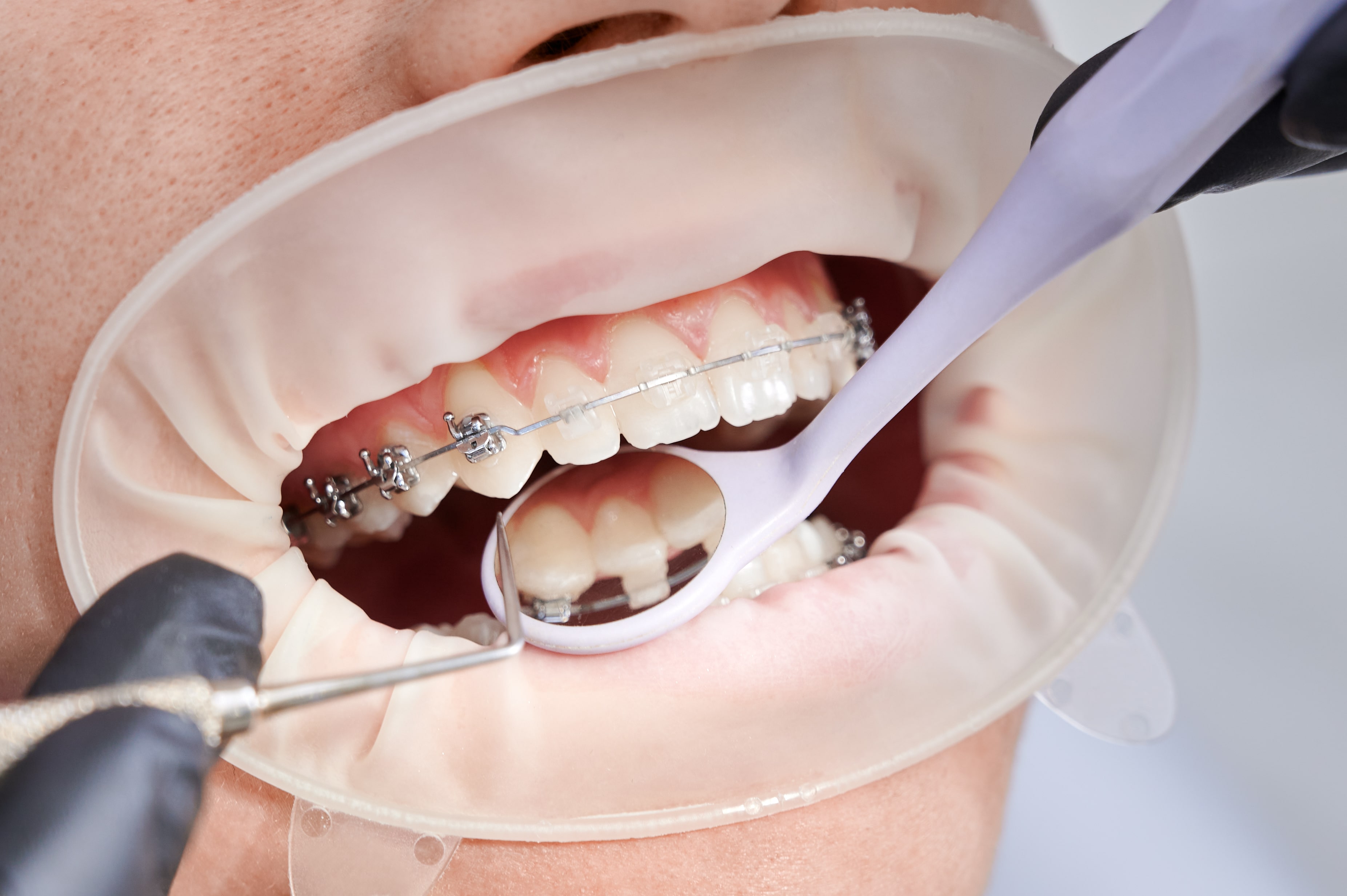
What are various treatment options?
Based on desired result for patient, an Orthodontist may propose various types of braces as an options such as:
Metal Braces: These are the most common type of braces that you are likely familiar with and are easily recognizable. Metal braces consist of just a few main components, namely the brackets, bands, wires, ligatures, and elastics. An orthodontist will either cement or bond the metal brackets directly to the teeth. A flexible wire fits through slots in the brackets to connect and hold the braces together. The orthodontist will then use small bands, known as ligatures, to hold the wire in place.
Ceramic Braces: Ceramic braces, also called clear braces, use clear or tooth-colored brackets made of polycrystalline alumina. This makes them subtler and less noticeable than metal braces.
Self-ligating Braces: This type of braces is similar to traditional metal braces. The main difference between the two styles is that self-litigating braces do not require the use of rubber bands. Instead, they use a special built-in system to hold the wire onto the bracket. The result? Less friction on the teeth, less discomfort and fewer visits to your orthodontist. The brackets for self-litigating braces can be made of metal and ceramic.
Clear Aligners: Clear aligners are orthodontic devices that are a transparent, plastic (medical grade) form of dental braces and are custom made to fit your teeth. Each aligner moves the teeth step by step towards the final position. Compared to conventional braces, aligners are closer to transparent, convenient, hassle free, require less maintenance and fewer orthodontist visits.
Why choose Manya Dental For Braces/Aligners & Orthodontic Treatment?
Manya dental is the best dental clinic in terms of determining the underlying cause for the problems faced by the patients and treating them accordingly. Our Orthodontists at Manya Dental focus on giving a best quality dental and orthodontic treatment at an affordable price. We believe in understanding the cause first rather than just focusing on the traditional treatment in dentistry which helps to give personalized solutions to our patients.
POST ORTHODONTIC TREATMENT INSTRUCTIONS
DURING TREATMENT
- You may experience some pressure and discomfort on your teeth.
- Be gentle with braces and avoid chewing hard and/or sticky food. Do not bite into raw fruits and vegetables or meat. Consume it in small sections.
- Brushing and flossing around braces is sometimes challenging and time consuming, but very important. You can use interdental brush to keep your braces and teeth clean.
- In case of irritation, rinse mouth with warm salt water.
- For tooth soreness, you can take a mild analgesic. However, it is better to avoid any pain-relieving medications as it may affect the tooth movement.
- Call immediately if a wire breaks or if a band or bracket comes loose. We need to schedule a special appointment to repair.
- If you are wearing a night brace, retainer or functional appliance, always bring it with you to each appointment.
- Be regular with your appointments for the treatment to go smoothly. Broken appointments will prolong the treatment. So, it is important to keep in mind all the instructions.
- Cooperation in wearing elastics, night brace, and all removable appliances is most important to treatment success.
AFTER TREATMENT
- A fixed retainer is placed on the tongue side of your teeth. It may feel strange at first, but you will get used to it in a few days.
- Although your fixed retainer is very strong, you must avoid biting into hard or chewy foods with your front teeth.
Dental Implants
Dental Implants
What are Dental Implants?
A dental implant is a prosthesis that interfaces with the bone of the jaw or skull to support a dental prosthesis such as a crown, bridge, denture, or facial prosthesis or to act as an orthodontic anchor. It is an artificial screw like structure that are mostly used to replace one or more missing teeth or to restore edentulous dental arches (implant retained fixed bridge, implant-supported overdenture). An implantologist places a dental implant into jaw bone and let it Osseo integrate - the biologic process where bone fuses tightly to the surface of specific materials such as titanium. The integration of implant and bone can support physical loads for decades without failure. A variable amount of healing time is required for osseointegration before either the dental prosthetic (a tooth cap, bridge or denture) is attached to the implant or an abutment is placed which will hold a dental prosthetic/crown.
When should you get dental implants done and what are the benefits of dental implants?
Implants are used to replace missing individual teeth (single tooth restorations), multiple teeth, or to restore edentulous dental arches (implant retained fixed bridge, implant-supported overdenture). In case of missing teeth or full mouth rehabilitation (FMR), dental implants could be an ideal solution for numerous benefits it poses. Few benefits of dental implants include:
- Restores close to natural functionality of missing tooth. They are more natural, comfortable and strong compared to other prosthetic options.
- Reducing bone loss and support facial features.
- It reduces the chance of cavities forming in neighboring teeth.
- It promotes bone maintenance where a tooth has fallen out.
- It eliminates the need for nightly removal and cleaning.
- It avoids intentional damage to the adjacent teeth which is required for a bridge.

Why choose Manya Dental for Dental implants?
At Manya Dental, we have a high bar when it comes to deliver best in class treatments to our patients. Only certified and experienced implantologists place implants and prosthesis for same are done by Prosthodontists. We do a thorough profiling and planning to increase the success rate because dental implants may not be appropriate for everyone. Before undergoing implant surgery, a person's bones must be in good shape since the implanting devices need to join with the jawbone. Additional bone grafting procedures may be required in such cases to augment bone. Success or failure of implants depends primarily on the thickness and health of the bone and gingival tissues that surround the implant, but also on the health of the person receiving the treatment and drugs which affect the chances of osseointegration. The amount of stress that will be put on the implant and fixture during normal function is also evaluated. Planning the position and number of implants is key to the long-term health of the prosthetic since biomechanical forces created during chewing can be significant.
Root Canal Treatment
Root Canal Treatment
What is Root Canal Treatment (RCT) & when is it necessary?
RCT is performed when a tooth becomes injured or severely infected (this typically occurs when a cavity is neglected over an extended period). A fractured or broken tooth, extensive decay, gum disease, or perhaps multiple dental procedures on one tooth can all cause infection.
Root canal treatment (RCT), also known as endodontic treatment, is done to remove the decay and prevent the extraction of the injured tooth. It involves several steps and may call for multiple sittings. This treatment involves extracting the infected pulp and sealing the tooth to stop reinfection. RCT eases the discomfort brought by inflammation and prevents the spread of infection which in turn avoids extraction of infected tooth.
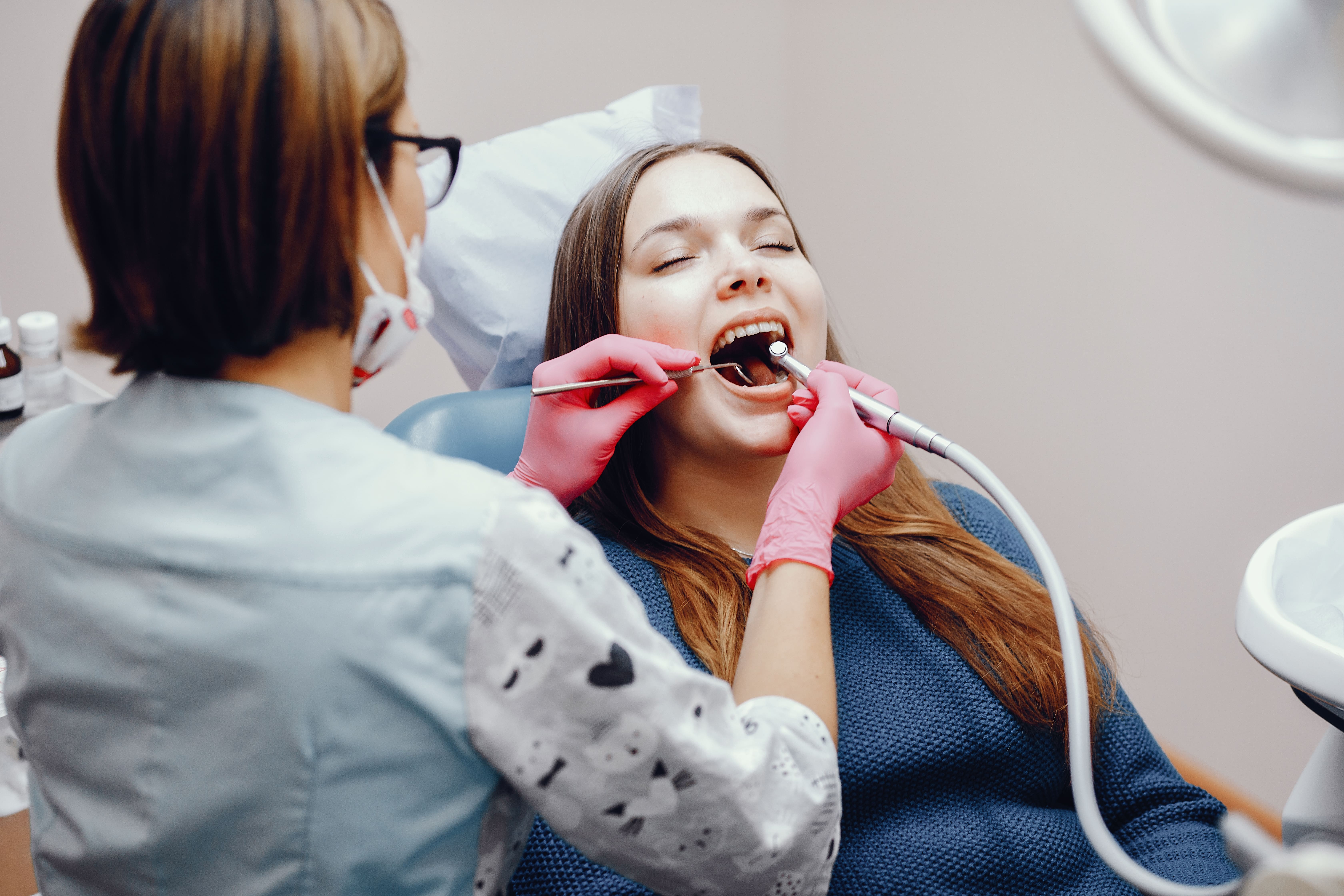
What are the symptoms indicative of Root canal treatment?
- A tooth ache is the most common symptom along with decay in teeth.
- Little to severe pain in infected tooth is possible. The pain increases day by day and may be severe at nights causing difficulty to chew food.
- Continued sensitivity especially when eating/drinking cold or hot foods.
- Gum swelling is also a sign when root canal treatment may be necessary.
One common mistake most people do when they experience above symptoms is to try home remedies or use pain killers, sensitivity tooth pastes etc., without consulting a dentist. If the pain disappears, this doesn’t necessarily signify healing of infected tooth. It could also mean that:
- The infection has spread far and the tooth's nerves are all dead.
- A pus-filled abscess may result from the germs from the infection getting into the tissues of the gum and jaw.
- Even more catastrophic diseases like heart disease and stroke may result from this.
We strongly recommend to have these symptoms reviewed by a dentist.
POST ROOT CANAL TREATMENT INSTRUCTIONS
- Patient will feel numbness in the treated area for 1-2 hours, depending upon the type of anesthesia given.
- Try not to bite lip/tongue during the time you are numb, also avoid eating/drinking hot for 1-2 hours.
- Temporary filling/cement would be placed. Do not drink/eat for ½ hour until the cement sets. Avoid chewing sticky foods & try to chew only on the opposite side of your treated tooth.
- Do not apply pressure to tooth/teeth under treatment for next few days. After initial few days following treatment, you may start a soft diet working your way back to normal function.
- After the tooth/teeth have been restored/filled, practice good oral hygiene includes brushing, flossing, regular checkups and cleanings.
- Some minor discomfort/pain in the treated area is normal following root canal treatment for 2-3 days. Do not worry/panic.
- Take prescribed medications as directed.
- Flare-Ups
95% of root canal treated tooth will not have severe pain, but 3-5 % of the cases will cause moderate to severe pain &/or swelling which begins few hours after treatment and may last for 2-3 days. Reasons may be badly infected teeth, teeth that are extremely irritated, or teeth that have a history of prior treatment.
Please contact our office if you experience any of these symptoms and you may be prescribed antibiotics, strong painkillers or you may be asked to come to the office to receive further therapy. - After root canal treatment is done, placement of crown on the tooth is necessary since it covers and protects the tooth from breaking in future. Delay in crown may result in fracture/loss of tooth.
Teeth Whitening
Teeth Whitening
What is teeth whitening or bleaching?
Teeth whitening or teeth bleaching is the process of lightening the color of human teeth. Whitening is often desirable when teeth become discolored over time for a number of reasons, and can be achieved by changing the intrinsic or extrinsic color of the tooth enamel. Laser whitening is another type of teeth whitening that a dentist can provide. A bleaching product is applied on teeth and a laser is shone on them to activate whitening. Teeth whitening can lighten the existing color by several shades. Teeth whitening isn’t permanent. Eating, drinking and oral hygiene habits impact how long the results last. Results can last from few months to 2 years based on oral hygiene habits of an individual.

Why/when is teeth whitening required?
People do teeth whitening or teeth bleaching for various reasons. Most common reason is when teeth discoloration happens due to poor oral hygiene habits. Other reasons include – attending interview or wedding or an important event, giving importance to facial aesthetics and as a part of smile designing for a confident and beautiful smile.
Dental Fillings
Dental Fillings
What is dental filling treatment?
A dental restoration or dental filling treatment is done to fill the missing part of the tooth, which results from decay. A dental filling or dental restoration procedure helps to fill the hollow space formed by tooth decay. This treatment is also used to fill gaps between teeth / teeth gaps or cracked teeth. Dental filling also prevents the further decay of the tooth. Filling treatment involves the following procedures:
Why is dental filling treatment necessary?
Tooth filling is generally done to treat a tooth hole or cavity resulting from tooth decay. Damage could happen when harmful acid- producing bacteria in your mouth attack the teeth. This can lead to a small hole or cavity primarily and may lead to tooth destruction (if ignored). A dental filling will release your tooth/sensitivity pain due to the cavity and prevent further tooth decay and gum infections.
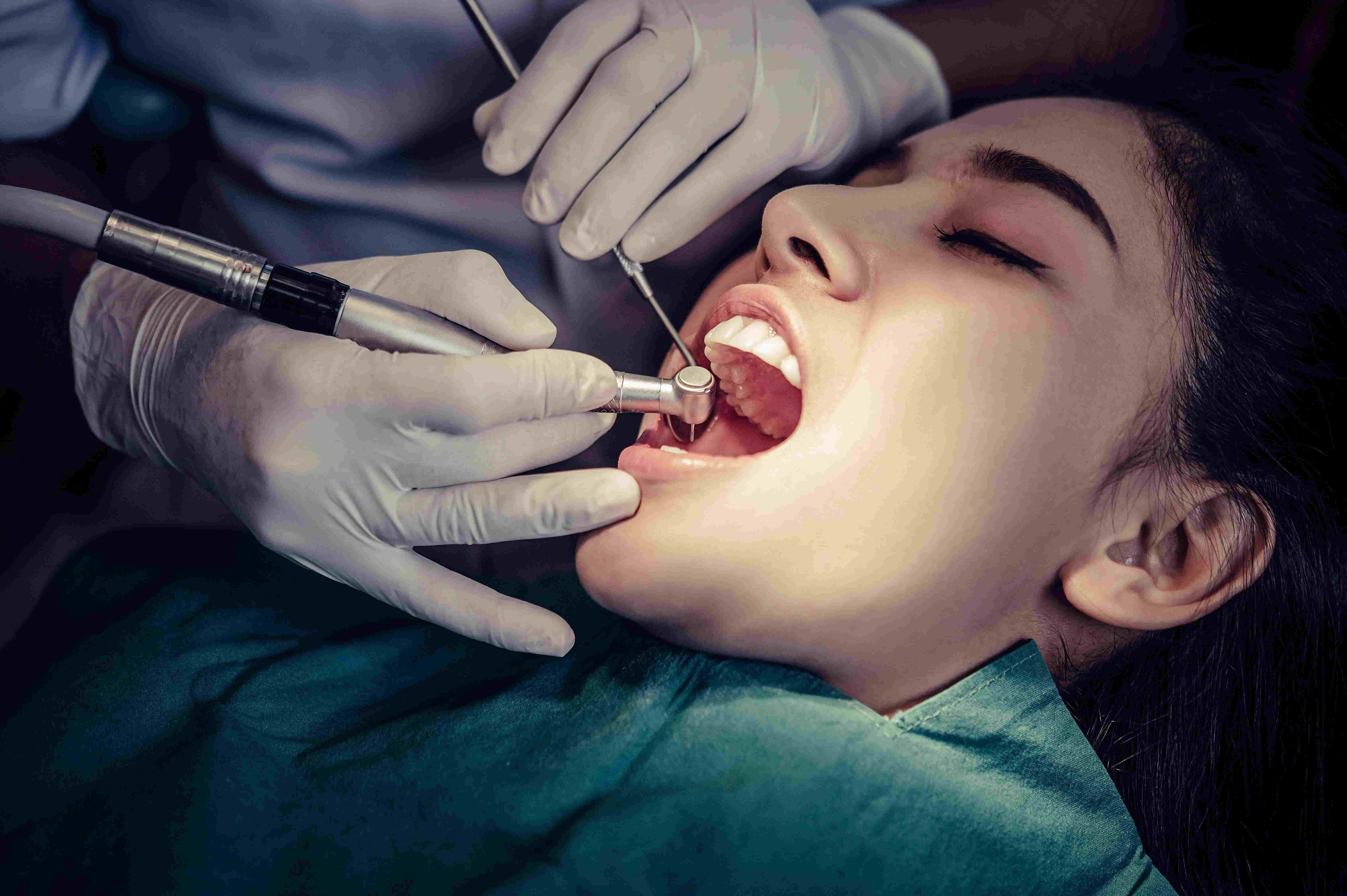
Which symptoms indicate a dental decay or cavity?
Toothache/sensitivity is one of the most usual symptoms of a decayed tooth. A hole and dark spot may be identified on the affected tooth. If you experience any of these symptoms, it is recommended to consult a dentist.
Ignoring dental decay or cavity for long period may trigger following symptoms:
- Foul odour in mouth.
- It may affect the nerve region of the tooth called as pulp of the tooth which may lead to root canal treatment.
- Pain at the time of chewing or biting food.
- Sensitivity to hot or cold temperature/foods/drinks.
- Pain becomes more severe and may spread to the jawbone
Extraction of teeth
Extraction of teeth
What is a tooth extraction?
A tooth extraction is a dental procedure during which your tooth is completely removed from its socket. Sometimes, people refer to this as “pulling" a tooth.
When is tooth extraction recommended?
Healthcare providers prefer to save natural teeth whenever possible. But sometimes, other restorative methods such as dental fillings and crowns aren’t enough. If your tooth has been badly damaged past the point of repair, then removal may be necessary. Your dentist may recommend tooth extraction if you have:
- Severe tooth decay that cannot be treated by filling/RCT/Crown.
- A fractured tooth beyond repair.
- An impacted tooth.
- Crowded teeth.
- Severe gum disease.
- Tooth luxation and other tooth injuries.
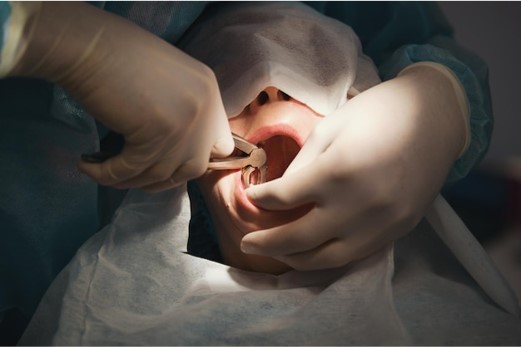
What are the advantages of pulling a tooth?
Tooth extraction offers a number of benefits. Most importantly, it reduces harmful bacteria leading to infection that can damage your teeth and gums. Left untreated, a decayed or damaged tooth can cause facial infections. Removing the affected tooth gives you the best chance for optimal oral health. Additionally, a tooth extraction can help ease dental pain almost immediately — especially if your tooth was severely broken or infected.
Types of Tooth Extraction
1. Simple Extraction:
In simple tooth extraction, the doctor will give the local anesthesia around the infected tooth to be plucked, which will not let you feel the pain during the procedure. The doctor will use an instrument called the elevator to loosen the gums and pull the tooth out.
2. Surgical Extraction
Local anesthesia is a must in either case, but apart from that, in the surgical extraction, deeper anesthesia is given such as nerve blocks and sedation if required to facilitate the procedure. The oral surgeon will cut into your gum with a small incision. They may need to remove bone around your tooth or cut your tooth before it can be extracted. Some stiches might be placed which need to be removed later.
Crowns & Bridges
Crowns & Bridges
What is a dental crown?
A Dental Crown is a tooth-shaped cap which is placed on the tooth to restore the shape, size, and appearance of the tooth. It also strengthens the tooth structure. If the major part of the tooth is missing, then the crown is the best solution for it. By placing the crown, a tooth can function normally again.
When is a crown given to
- Restore the tooth structure on which RCT was performed
- Replace a tooth which needs a large or multisurface fillings
- Protect or restore a tooth from fracturing due to accident or trauma
- Get a cap over Implant placed
- To reinforce strength in badly formed teeth
What is a bridge
A bridge is given to replace a missing tooth by taking support of adjacent teeth. Bridge is made by crowns on either side of the gap. The supporting teeth on either side are called abutments. They can be natural teeth or implants.
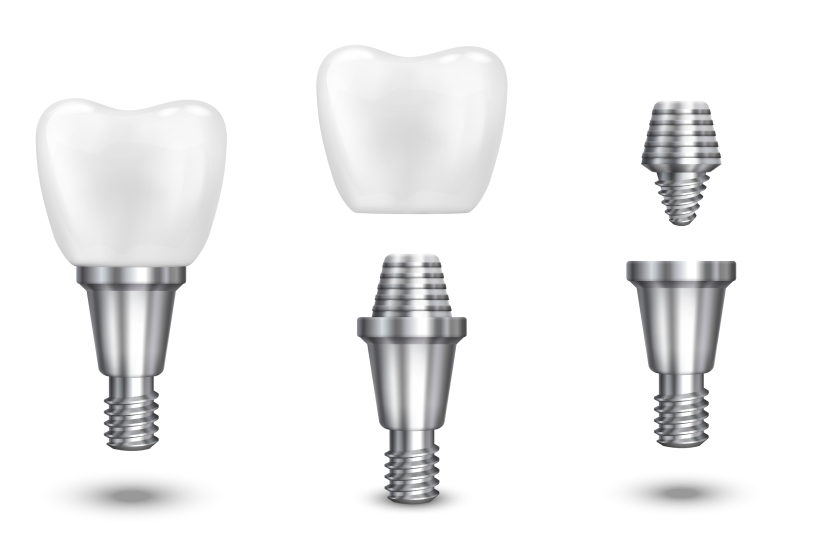
What are the benefits of bridges
Bridge help to restore the ability to chew, maintain the shape of the face, distribute the forces in your bite properly by replacing the missing teeth and prevent the remaining teeth from drifting out of position.
What are the types of crowns
There are various types of crowns based on the material used to make them. It can be metal, porcelain fused to metal (PFM), ceramic and Zirconia crowns. Porcelain fused to metal, full ceramic crowns and Zirconia crowns are esthetic crowns which resemble the natural teeth completely. Zirconia is a type of ceramic that is stronger than porcelain and tends to cause less stress and damage to the opposing teeth than porcelain crowns. Metal crowns are recommended for back teeth where esthetics isn’t a concern.
Dentures
Dentures
What are dentures
Dentures are removable appliances which are used as a replacement of missing teeth and tissues. They enable normal functioning of human mouth in absence of natural teeth.
Types of denture:
Complete & Partial.
Complete dentures are advised when all the teeth are missing, and partial dentures are advised when some teeth are missing. They are custom made for an individual.
Complete dentures are positioned on either the bottom jaw in a horseshoe shape and or over the upper jaw and roof of the mouth.
Partial dentures are for few missing teeth which are joined to base of the denture by a metal framework, which helps maintain the partial denture in place.
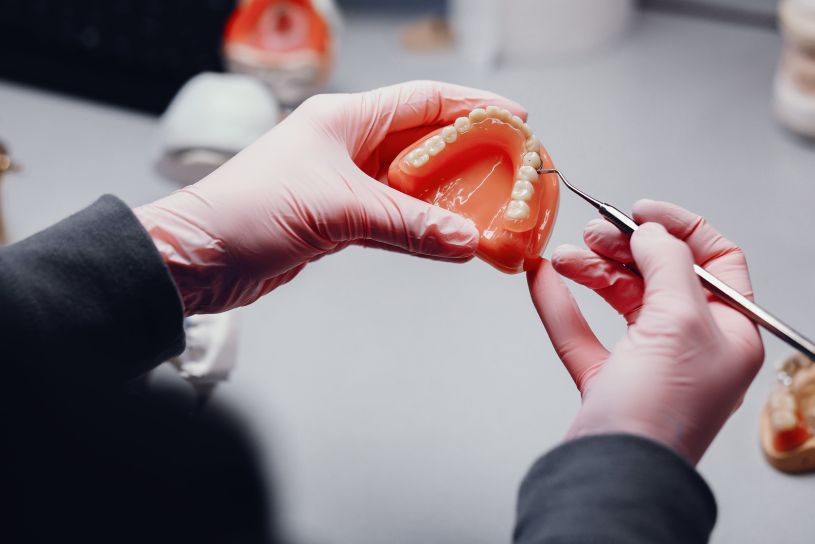
How are the dentures made
The impressions of the upper and lower jaws are taken first to analyze how well they relate to one another. The wax models are then made to check the fitting. The final dentures are made with these wax models. The patient is made to try the final denture and necessary adjustments are made.
Why Wearing Dentures Is Beneficial?
Dentures mimic the functions of the natural teeth.
- A few dental appointments might be necessary to acquire the right fit, but that is a small price to pay for restored confidence in chewing and speaking.
- You are no longer subject to dietary limitations. All the meals you used to consume before losing your teeth are now available to you if you wear dentures.
- To protect your dentures, your dentist may suggest certain foods that should be consumed in moderation.
- Your smile is restored and any social awkwardness you may have experienced due to your tooth gaps are gone.
DENTURE USAGE/MAINTENANCE
- Wear the denture for 24 hours continuously on the first day
- Expect some amount of discomfort/ pain during this period
- In the event of severe pain/discomfort only, the denture maybe removed from the mouth and keep it in a bowl containing water
- Remove the denture at night to give rest to the tissue and keep it in a bowl containing water.
- Massage the gums before using the denture for proper blood circulation
- Eat the same kind of food which he/she was taking during edentulous state (without teeth) for few days with teaspoon to ensure small quantity
- Clean the denture with denture cleaning powder/tablet and not with any abrasive or hard bristle brushes
- Use of denture adhesive to develop muscular control/coordination is an accepted procedure
- Do not use Anterior/Front teeth to cut food or lift the head during drinking water as this action will lift the denture.
- Expect difficulty in pronunciation of words, read aloud at home to get adjusted to it.
- Take out the denture into a basin full of water because in the event it slips of the hand it will fall in water only (to prevent breakage)
- Try chewing vertically (up & down) rather the horizontally (side to side)
- Initially avoid hard and sticky foods.
- Initially expect increased salivation.
- Only the dentist and the patient are best judge of esthetics/appearance and it will take time for the artificial denture to adapt to the tissues.
Oral Cancer Screening
Oral Cancer Screening
What is oral cancer?
Oral cancer, also known as mouth cancer, is cancer of the lining of the lips, mouth, or upper throat. In the mouth, it most commonly starts as a painless white patch, that thickens, develops red patches, an ulcer, and continues to grow. When on the lips, it commonly looks like a persistent crusting ulcer that does not heal, and slowly grows. Other symptoms may include difficult or painful swallowing, new lumps or bumps in the neck, a swelling in the mouth, or a feeling of numbness in the mouth or lips
What are the symptoms of Oral Cancer?
One should seek advice of a dentist if he/she experience any of the below mentioned symptoms:
- Swelling, thickening, lumps, bumps, or any other changes in the tongue, lips or any region in mouth.
- Developing velvety red, white, or red-and-white patches around the mouth.
- Other signs of oral cancer include unexplained bleeding from the mouth. Any section of the face, neck, or another body part that is numb or loses feeling, including the area around the mouth throat discomfort, or a vague sense of having something stuck there.
- Oral cancer can be detected by symptoms such as difficulty in speaking, chewing, swallowing, and moving the tongue, or jaw.
- Change in voice or it being hoarse or having painful throat
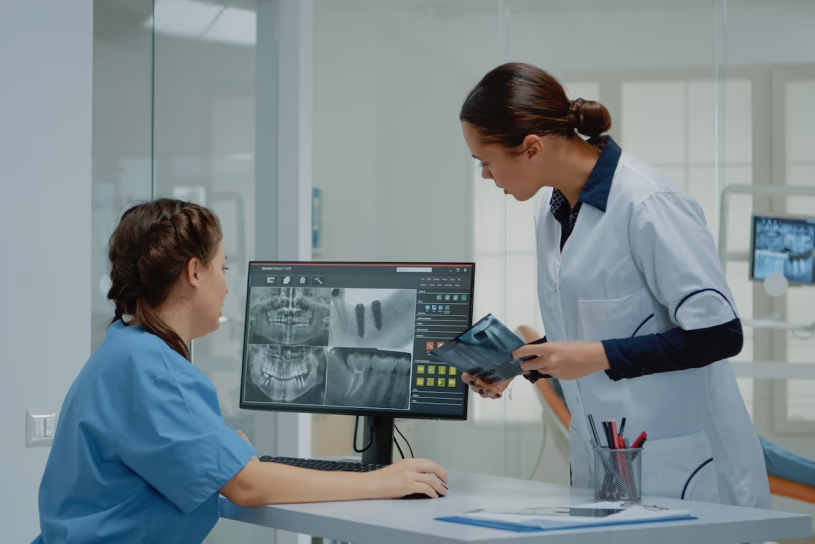
What causes oral cancer?
Squamous cells inside the mouth are the origin of oral cancer. Oral squamous cell carcinoma is a disease of environmental factors, the greatest of which is tobacco. Like all environmental factors, the rate at which cancer will develop is dependent on the dose, frequency and method of application of the carcinogen (the substance that is causing the cancer). Aside from cigarette smoking, other carcinogens for oral cancer include alcohol, viruses (particularly HPV 16 and 18), radiation, and UV light.
Clear Aligners
Clear Aligners
Why is orthodontic treatment important?
Orthodontic treatment helps in aligning your teeth in a correct position, improving your oral health and creating a beautiful smile. Without the help of dental braces, jaw growth and tooth alignment can be affected.
Abnormal alignment of teeth can lead to various dental issues. Protruding front teeth are at risk for trauma, crowded or spaced teeth make maintaining oral hygiene difficult, improper bite can lead to unhealthy gums and mouth breathing, and also lead to pain in the joint and facial muscles.
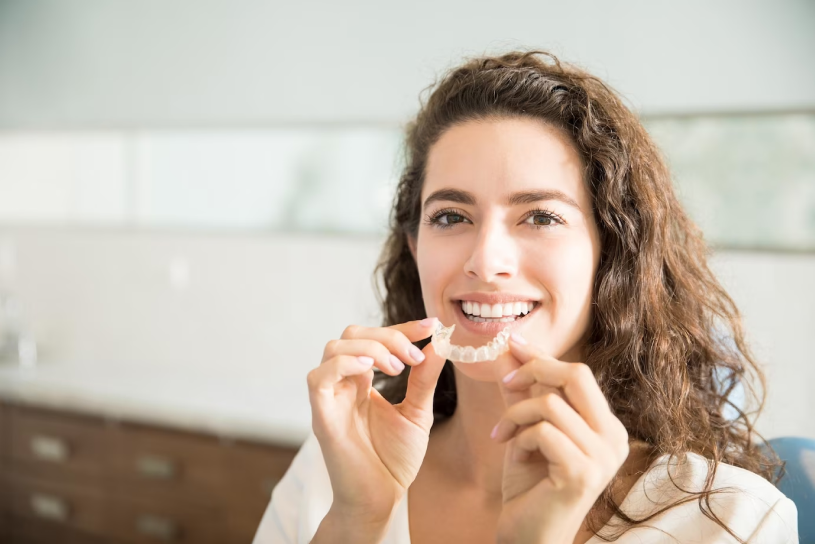
Orthodontic treatment helps in aligning your teeth in a correct position, improving your oral health and creating a beautiful smile. Without the help of dental braces, jaw growth and tooth alignment can be affected.
Abnormal alignment of teeth can lead to various dental issues. Protruding front teeth are at risk for trauma, crowded or spaced teeth make maintaining oral hygiene difficult, improper bite can lead to unhealthy gums and mouth breathing, and also lead to pain in the joint and facial muscles.
Orthodontic treatment helps in aligning your teeth in a correct position, improving your oral health and creating a beautiful smile. Without the help of dental braces, jaw growth and tooth alignment can be affected.
Abnormal alignment of teeth can lead to various dental issues. Protruding front teeth are at risk for trauma, crowded or spaced teeth make maintaining oral hygiene difficult, improper bite can lead to unhealthy gums and mouth breathing, and also lead to pain in the joint and facial muscles.
Emergency Care
Emergency Care
Why is orthodontic treatment important?
Orthodontic treatment helps in aligning your teeth in a correct position, improving your oral health and creating a beautiful smile. Without the help of dental braces, jaw growth and tooth alignment can be affected.
Abnormal alignment of teeth can lead to various dental issues. Protruding front teeth are at risk for trauma, crowded or spaced teeth make maintaining oral hygiene difficult, improper bite can lead to unhealthy gums and mouth breathing, and also lead to pain in the joint and facial muscles.
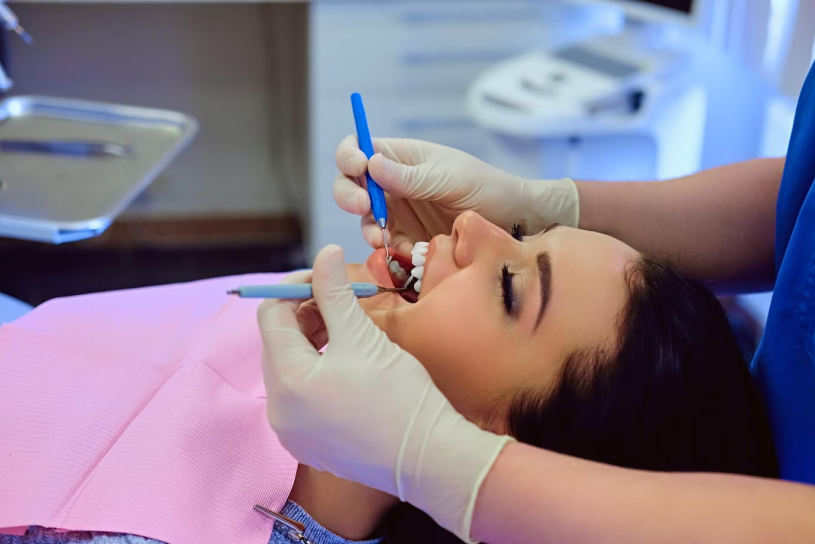
Orthodontic treatment helps in aligning your teeth in a correct position, improving your oral health and creating a beautiful smile. Without the help of dental braces, jaw growth and tooth alignment can be affected.
Abnormal alignment of teeth can lead to various dental issues. Protruding front teeth are at risk for trauma, crowded or spaced teeth make maintaining oral hygiene difficult, improper bite can lead to unhealthy gums and mouth breathing, and also lead to pain in the joint and facial muscles.
Orthodontic treatment helps in aligning your teeth in a correct position, improving your oral health and creating a beautiful smile. Without the help of dental braces, jaw growth and tooth alignment can be affected.
Abnormal alignment of teeth can lead to various dental issues. Protruding front teeth are at risk for trauma, crowded or spaced teeth make maintaining oral hygiene difficult, improper bite can lead to unhealthy gums and mouth breathing, and also lead to pain in the joint and facial muscles.
